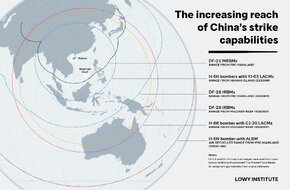Todjaeger
Potstirrer
- Thread Starter Thread Starter
- #3,701
Not really understanding the direction of the quoted question. From my POV, with either an Australian or American context in mind, I do not see land-based AShM batteries as being valuable or really worthwhile.Wouldn’t it be easier to put the missiles on a long distance jet?
For Australia specifically, the ADF could fairly easily base and support launchers, batteries and units upon mainland Australia and TAS. Establishing launcher sites on Australian territories like the Tiwi Islands, Christmas Island, the Cocos/Keeling Islands or Norfolk Island could be done, but IMO it would be rather expensive given the likely difficulties which deploying and then supporting launchers, or even worse, and entire battery of launchers.
However, what areas could any/all of these launchers provide any sort of A2/AD coverage for? From where I sit, these launchers could really only provide coverage for the areas around and approaches to Australia, and realistically only for surface shipping.
From my POV this is an issue with the entire concept, because wasting precious and limited funding to build an A2/AD around Australia looks to me to more or less just be a modern version of a Defence of Australia strategy, or perhaps an Australian equivalent to the Maginot Line. Sure, Australia might be able to establish an ability to annihilate hostile surface TF's that venture into the Timor Sea, the Arafura Sea, or the Coral Sea, but realistically, Australia can be largely isolated and neutralized without hostile powers needing to send such TF's into those areas. This would especially be the case if the hostile power(s) were able to either neutralize or otherwise come to some sort of arrangement with Indonesia, or to a lesser extent PNG and/or the Solomons.
The most likely reason why hostile TF's might venture into the seas immediately bordering Australia would be if the vessels had embarked forces which were to be landed to establish a beachhead and land base for operations against Australia. I also do not see this as a likely scenario, and one which would most likely only arise if/when there was a major conflict which led to Australian forces reaching the point of exhaustion, as well as Australian allies being unable/unwilling to intervene.


